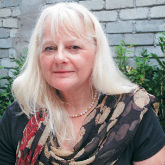Although we think of Chinese migration to Southeast Asia as a fairly recent phenomenon, people from mainland China have actually been settling here for hundreds of years. Most came as traders and merchants, but in the fifteenth century Princess Hang Li Po came all the way from China to become one of the wives of the Sultan of Malacca, bringing with her a retinue of over 500 people. Many of those earlier immigrants intermarried with locals and created the elegant culture that we now call Peranakan.
The next wave of migrants came from a very different social background, as the poverty and famine in nineteenth century China drove many to try their luck overseas. Arriving in Penang as labourers or coolies (the word means “bitter strength” in Chinese) with very little money, they managed to move up the social scale through hard work. They were also aided by a strong sense of clan loyalty as well as practical help from others who had the same surname and perhaps sharedancient ancestral roots. The clan houses of George Town, many of them now beautifully restored, tell the story of these resilient migrants, and visiting them gives a real insight into the culture and history of the Penang Chinese.
Three clan houses lie in one of the most beautiful streets in George Town: Armenian Street. For a nice morning of exploration start at the Cheah Kongsi, which has an entrance in Armenian Street but also boasts a magnificent façade with grand iron railings in Beach Street. When you see the wealth of this nineteenth century clan house, you will realise how far the immigrants managed to come in their new land. The Cheahs were very diplomatic and worked on having good relationships with the whole community. They placed three lion statues in the courtyard of the clan house: a traditional Chinese lion in grey stone, a painted Indian lion, and British lion peeping out from the rafters. In this way they acknowledged three of the major powers in the region without insulting anybody. However, on the upper floor they had a subtle revenge on the supremacy of British Empire: by creating a very high threshold, they forced visiting Englishmen to bow very low to the tablets of their ancestors.
There is an altogether different feeling at the Hock Teik Chung Temple, a few steps up Armenian Street, which is dedicated to the God of Prosperity, Twa Peh Kong. Set discreetly back from the street in a quiet courtyard with an entrance guarded by a slightly anxious-looking tiled dragon, this temple is unique in Penang because it is not a clan house as such but the headquarters of four brotherhood societies. These societies were very prominent in nineteenth century Penang and allied themselves with other societies arising from the Indian and the Muslim communities.
Fierce rioting broke out in 1867 between the rival secret societies, with nine days of heavy street fighting and much bloodshed. It seems to have started as a dispute over commercial interests – particularly in the recently established and highly lucrative tin-mining industry. The British administration was only able to suppress the rioters by bringing in re-inforcements from Singapore. During this time, the secret passage out of the Hock Teik Chung Temple – leading to a nearby shop house – must have been very useful. You can see the bricked up entrance to the secret passage in an alleyway off the temple’s main courtyard.
A completely different vibe comes from the last temple – the green-faced Yap Kongsi, on the corner of Armenian Street and Cannon Street. The Yap clan (which can trace its roots back two thousand years in Fujian province) came to Penang after the Taiping Rebellion in China. Built in 1924 in the Straits Eclectic style, the temple boasts gorgeous carved pillars from China decorating its entrance, and inside its cool courtyard is the altar of ancestral tablets. One of the founders of this temple is an emigrant called Yeap Chor Ee, who arrived in penniless in Penang in 1882. By the time he died in 1952 he had amassed a huge fortune from mining, construction, and banking.
After such an exciting morning, it might be an idea to head for China House, opposite the Cheah Kongsi in Beach Street, for some much-needed refreshment.
———————————————————————————————————
Source: The Expat May 2013
What are your thoughts on this article? Let us know by commenting below.No registration needed.
"ExpatGo welcomes and encourages comments, input, and divergent opinions. However, we kindly request that you use suitable language in your comments, and refrain from any sort of personal attack, hate speech, or disparaging rhetoric. Comments not in line with this are subject to removal from the site. "

















